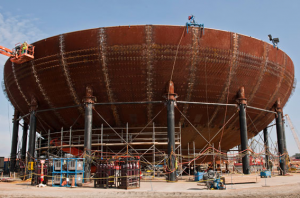
The Department of Energy's vision for the future of nuclear energy will probably combine the few Generation III+ ( like the Westinghouse AP-1000) light water fission reactors that just squeaked into production (see video), along with a panoply of small modular reactors (SMRs) currently in development.
SMRs are becoming viable because large nuclear reactors, built on-site, have become so expensive that financing is difficult to find, even with government loan guarantees. "We won't build large numbers of new nuclear plants in the U.S. in the near term," Marvin Fertel, president of the Nuclear Energy Institute, a lobbying group for the nuclear industry, told David Biello of the Scientific American.
Fertel focused on a big problem facing nuclear power: natural gas is cheap. So utilities are building natural gas-burning turbines rather than more expensive nuclear power plants. "Today, you ought to build gas," Fertel admits. But "you don't want to build only gas."
In the future, SMRs could fill a growing, unmet need for a factory-built, transportable power source, made cost-efficient by mass-production.
Accelerating a trend
The main benefit SMRs would provide over larger reactors: significantly lower upfront costs. Utilities could purchase an SMR and then incrementally add modules later if the electricity demand increased. Each module is also completely self contained, and some designs can operate for years before refueling is needed.
To accelerate this new trend, the U.S. Energy Department and its Savannah River Site (SRS)
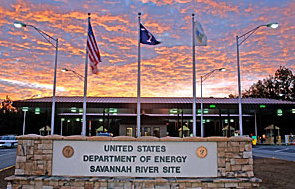
announced three public-private partnerships to develop deployment plans for small modular nuclear reactors (SMRs) at its facilities near Aiken, South Carolina.
This follows the NRC's Jan 20 announcement, which established cost-shared agreements between the DOE and private industry to support the design and licensing of SMRs. At the time, DOE Secretary Chu said, "America's choice is clear - we can either develop the next generation of clean energy technologies, which will help create thousands of new jobs and export opportunities here in America, or we can wait for other countries to take the lead."
The latest agreements are with Hyperion Power Generation; Holtec International; and NuScale Power, helping these companies obtain potential SMR reactor siting at Savannah River.
The Hyperion power module
Hyperion Power Generation, based in Denver, Colorado, was founded in 2007 (press
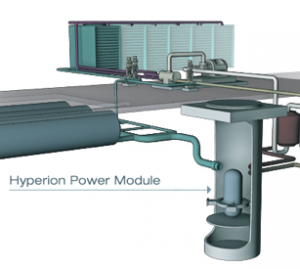
release). The company has been working with Los Alamos National Laboratory to design the Hyperion Power Module (HPM), which is designed to power remote mining or oil and gas operations, large government complexes, and isolated communities. Among developing nations with weak power grids, a first module could be purchased and additional modules added as both the population and grid grow.
The design produces 25 megawatts (MW) and uses uranium nitride fuel and lead-bismuth eutectic (LBE) coolant. The reactor is sealed at the factory, sited underground, and replaced with a new module after a ten-year core life. The reactor vessel is transportable by truck, ship, and rail.
The Holtec SMR - 160MW reactor
The SMR-160 is a 160 MW reactor based on Holtec's HI-SMUR technology, which
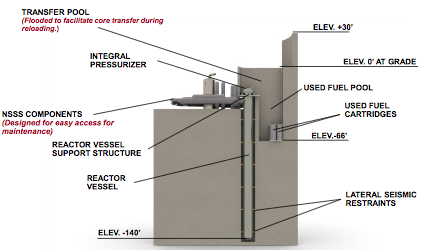
stands for Holtec Inherently Safe Modular Underground Reactor. Holtec's (press release) says it has designed the system to be safer by using gravity as the motive energy in all the reactor's critical safety systems.
The company sees this reactor as the centerpiece of the smart micro-grid at SRS, providing secure and clean power to the entire SRS and other strategic government installations in the surrounding region.
The Nuscale SMR
NuScale (website) secured rights to their SMR design through a technology transfer agreement with Oregon
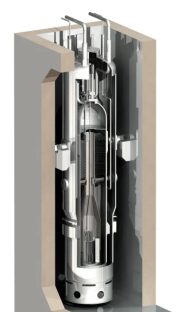
State University. OSU had already developed a one-third scale, electrically-heated, test facility that replicates the entire NuScale system at temperature and at pressure.
The NuScale reactor pressure vessel contains both the nuclear fuel, or reactor, and the steam generators. Water in the reactor circulates using a convection process known as natural circulation. This is also described as a passive safety system because no pumps or other mechanical devices are required to circulate the water.
NuScale's compact plants are modular and designed for off-site fabrication at existing facilities in the US and around the world, where lead times will be shorter, and costs more controllable. The modular components, like other competing SMRs, are transportable by barge, truck or rail. (Nuscale fact sheet)
There's another project going forward with the Tennessee Valley Authority.
The TVA and the Babcock & Wilcox mPower SMR
Babcock and Wilcox has just been included in the 2012 TR50, Technology Review's
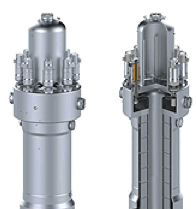
annual list of the world's most innovative technology companies, for its innovative small modular reactor technology and design.
When B&W announced the launch of its mPower design (watch CGI demo), it said that Tennessee Valley Authority (TVA) would begin the process of evaluating Clinch River at Oak Ridge as a potential lead site for the SMR. In November 2010, TVA informed the NRC that it was "considering submitting an application for construction permits for up to six mPower 125 megawatt SMR modules.
The 125 MWe integral PWR is 4.5 m diameter and 23 m high. It would be installed below ground level, have an air-cooled condenser and passive safety systems. The factory-made module and several units would be combined into a power station of any size, but most likely 500-750 MWe. (mPower spec sheet)
Now it's in the DOE's and TVA's hands
This is still a protracted process. The MOA doesn't constitute a federal funding commitment. Since the DOE publicly says it expects that private sector funding will be used to develop these technologies and deployment plans, we'll have to wait and see if the market for SMRs is more enthusiastic than the more costly gigawatt-sized Ap100s.
This latest announcement builds on the DOE's earlier efforts:
- The DOE announced $10 million in new research funds earlier this month to improve reactor safety, performance and cost competitiveness.
- In 2010, the Department signed $8 billion in loan guarantees to support the Vogtle project, where the Southern Company and Georgia Power are building two new nuclear reactors.
- The Energy Department has also supported the Vogtle project by providing more than $200 million through a cost-share agreement to support the licensing reviews for Westinghouse's AP1000 reactor design certification.
- Over the past three years, the Department has invested $170 million in research grants at more than 70 universities, supporting R&D into a full spectrum of technologies, from advanced reactor concepts to enhanced safety design.


